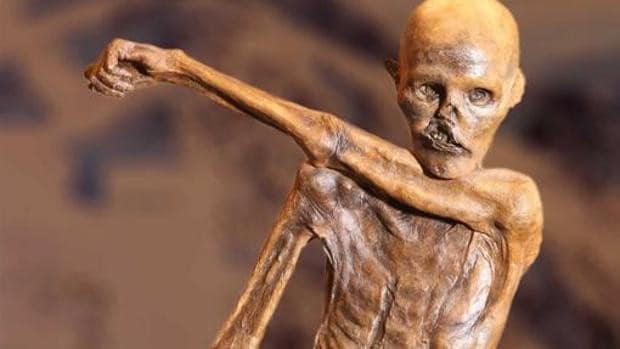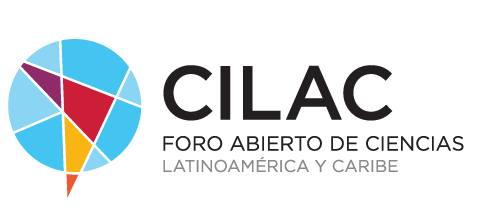 In Oscar Wilde's novel "The Picture of Dorian Gray," the protagonist owns a painting of his image that, curiously, ages in place. Without having to resort to the inventions of literary fiction, science and physical anthropology know other means that can stop the passage of time. Ötzi, the man trapped in the ice of the Alps, is in an excellent state of preservation on his thirtieth birthday. Thanks to him, we have the opportunity to study a literally frozen image of our history.
In Oscar Wilde's novel "The Picture of Dorian Gray," the protagonist owns a painting of his image that, curiously, ages in place. Without having to resort to the inventions of literary fiction, science and physical anthropology know other means that can stop the passage of time. Ötzi, the man trapped in the ice of the Alps, is in an excellent state of preservation on his thirtieth birthday. Thanks to him, we have the opportunity to study a literally frozen image of our history.
Monolith marking the location where Ötzi's mummy was found – South Tyrol Museum of Archaeology/Dario Frasson
It was 1991 when hikers discovered the remains of an individual in the Ötztal Alpine mountains. Given their good preservation, they believed they were those of a mountaineer who had died a few years earlier. The surprise was immense when investigations concluded that the body was more than 5,000 years old. Since then, Ötzi has become one of the main sources of information for understanding Europe's past.
For several years, highly qualified research teams have conducted pioneering studies on the mummy. This has revealed a wealth of information that brings us closer to our past.
First, Ötzi bears the marks of the characteristics that make us human: violence and illness. It is considered the oldest recorded murder to date. In fact, the Iceman has an arrowhead in his left shoulder, several broken ribs, and a head injury, all signs of a possible attack.
Between forty and fifty years old, Ötzi suffered from several illnesses and severe arthritis that had worn down his joints. He also urgently needed dental care. The cavities, along with receding gums, must have caused him severe pain.
The Iceman was not alone, but accompanied by annoying guests, such as the presence of fleas,
Helicobacter pylori
and of
Trichuris sp
., which could have caused various stomach pains.
The study of Ötzi's intestinal tract suggested he was omnivorous. Indeed, the predominant tissue types in the stomach contents were animal muscle fibers (possibly from deer and goat) and plant fragments. The food remains found revealed a balanced mix of carbohydrates, proteins, and lipids, perfectly suited to the energy needs of his high-altitude trek.
A trip from Sardinia
The Ötzi mystery seems to be attracting increasing attention from scientists from very diverse fields. In fact, genetic studies have placed Ötzi's ancestor in a region of Sardinia, demonstrating the presence of a migratory flow during the Copper Age.
The equipment he carried with him enabled him to face the potential challenges of a hostile environment, such as a high mountain range. He wore clothing made of goatskins and plant fibers, as well as a hat made of bearskin. Among his belongings were a copper axe (which proved to be a status symbol), a bow and arrows, and a dagger made of stone.
His body was adorned with 61 tattoos, featuring various lines and crosses. According to researchers, these designs were intended for therapeutic purposes, being placed on areas prone to pain, so they could be considered a primitive form of acupuncture.
The information contained in Ötzi tells us not only about him, but also about his environment. Thus, the study of pollen has allowed us to gain insight into the vegetation typical of the Alps during the Copper Age, as well as to date his death to early summer.
Certainly, finding and studying Ötzi's mummy has been like opening a chest of incalculable riches, since its discovery can be compared to that of the Madeleine coat or the tomb of Tutankhamun.
In a little less than 1.60 meters tall, millennia of our history are summarized: pathologies (both intestinal and dental), diet, interpersonal violence, trade, and migration. In short, all the aspects that make us human and about which the remains of a man who lived 5,300 years ago continue to speak to us.
Lorenza Coppola Bove is a professor of Forensic Anthropology at the Comillas Pontifical University.
José Francisco Martín Alonso is a PhD student in the Biomedicine program, specializing in Physical Anthropology, University of Granada
Ramón López-Gijón is a PhD student in Biomedicine at the University of Granada.
This article was originally published on The Conversation.
<img src="»https://counter.theconversation.com/content/155971/count.gif?distributor=republish-lightbox-advanced»" alt="»The" conversation» width="»1″" height="»1″" style="»border:" none !important; box-shadow: margin: 0 max-height: 1px max-width: min-height: min-width: opacity: outline: padding: text-shadow: !important» />
